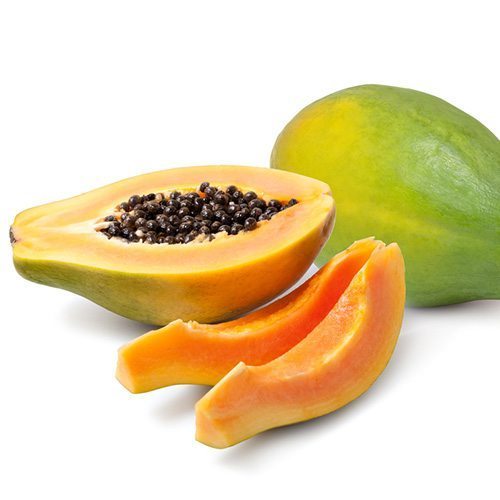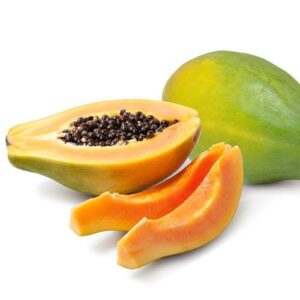by Nancy Mehlert, MS
Here in Texas, you can find Papaya in the grocery store almost year around. This fairly medium to large sized fruit is orange in color. It grows well in any tropical area, but is native to southern Mexico and Central America. It is especially helpful to mention papaya in our newsletter this month as we look at various aspects of digestive and bowel health, as papaya is well recognized as a fruit that aids in digestion, soothes an upset tummy, and provides a respectable amount of fiber to aid in regularity and digestion. And of course, the good news is, it has a great refreshing flavor which is nice for the hottest months of the year.
The magical ingredient in papaya is called papain which supports the digestive process by breaking down proteins and also improving absorption of them. It is often extracted for digestive enzyme supplements and is also included in meat tenderizers. For those who suffer from low acid content in the stomach and have difficulty digesting meat, papain from papaya can be very helpful. Pregnant women struggling with morning sickness may find papaya to be a very soothing solution. Research also suggests papain functions as an anti-inflammatory substance.
Papaya has other important nutritional qualities as well. It has a very good Vitamin C and Vitamin A content, and these fight free radical damage in the body, creating an environment that protects against aging and disease. While very, very low in fat, the fat content is predominantly anti-inflammatory Omega 3 fatty acids. Finally, papaya is also a good source of folate, an important B vitamin, as well as a source of calcium, potassium, and magnesium.
Try papaya chopped into a salsa, as a topper on a salad, pureed and blended with coconut milk to make a summer sorbet, sliced like melon or as a fruit to dip in a chocolate fondue. The seeds, while edible, are surprisingly peppery in flavor and generally are discarded.
As a reminder to our readers, fruit offers a nice adornment or a nice finish to a meal, but, due to sugar and total carbohydrate content, one should be cautious about portion control and limit frequency of servings to 0 to 2 per day.



